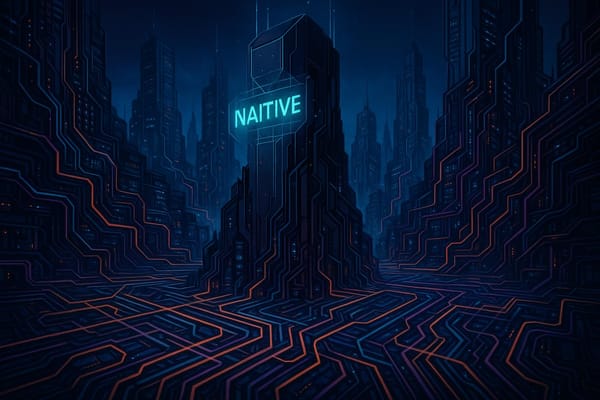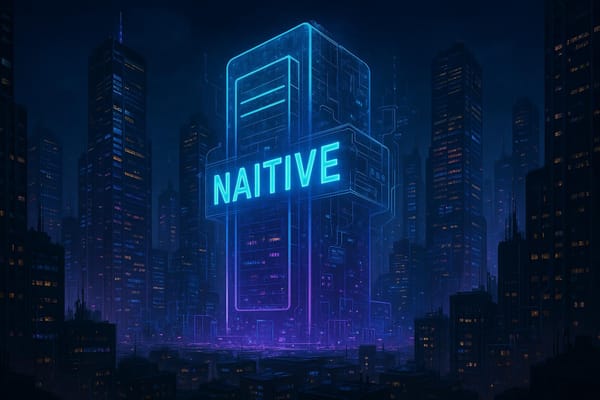AI Training for Non-Tech Teams: Step-by-Step Guide
Learn how non-tech teams can integrate AI to enhance efficiency, reduce costs, and transform their workflows with practical training and support.

AI can boost efficiency by 103% and cut costs by 67%. Non-tech teams are using AI for tasks like customer service, marketing, and product improvements. This guide simplifies AI training, covering basics, training steps, and ongoing support to help your team confidently integrate AI into daily work.
Key Takeaways:
- What AI Does: AI learns from data to handle tasks like answering questions or analyzing patterns.
- Common Uses: Automating customer service (26%), personalizing experiences (23%), and improving products (22%).
- Training Steps: Hands-on learning, department-specific sessions, and ethics training.
- Ongoing Support: Provide resources like a knowledge base, peer groups, and regular progress tracking.
AI isn't here to replace people - it complements human skills. With proper training, your team can use AI to save time, improve results, and focus on more complex tasks.
AI Fundamentals
AI Basics Explained Simply
AI systems act as digital assistants that learn from data and make decisions. They handle specific tasks like answering customer inquiries or analyzing data by identifying patterns and applying what they’ve learned.
| AI Component | What It Does | Example in Action |
|---|---|---|
| Machine Learning | Identifies patterns in data | Predicts customer buying habits |
| Natural Language Processing | Understands human language | Manages customer chats |
| Autonomous Agents | Operates independently | Resolves support tickets |
These components explain why businesses use AI to streamline operations and improve efficiency.
Common Business Uses of AI
More businesses are integrating AI into their operations. Data shows popular applications include automating contact centers (26%), personalizing customer service (23%), and improving customer acquisition (22%).
AI-powered systems for handling support queries have significantly improved response times and resolution rates. For example, a Voice AI Agent Solution achieved the following:
- Customer retention increased by 34%
- Customer conversion rates rose by 41%
- It managed 200 outbound calls daily
These results highlight how AI can drive measurable improvements. However, misconceptions about AI often create barriers, which we’ll address next.
Common AI Myths vs Facts
Misunderstandings about AI can slow down its adoption, especially among non-technical teams.
| Myth | Reality |
|---|---|
| AI will replace human workers | AI enhances human efforts, allowing teams to focus on more complex tasks. |
| AI is too complicated for non-tech teams | Many modern AI tools are designed to be user-friendly and accessible. |
| AI implementation is too costly | AI can cut costs by 67% while boosting efficiency by 103%. |
AI doesn’t replace people; it complements their skills. When NAITIVE introduced their Voice AI Agent Solution, it improved performance without cutting jobs. John, the company’s CEO, noted, "The Voice AI Agent Solution NAITIVE implemented is from the future".
AI works best when treated as a partner to human expertise, enhancing workflows while leaving critical decisions and creativity to people.
Scaling AI adoption for non-technical teams with AI Learning ...
Getting Teams Ready for AI Training
Understanding AI basics is just the start - properly preparing your team is essential for a smooth transition and effective implementation.
Measuring Current AI Knowledge
Start by evaluating your team's current understanding of AI. This helps you identify skill gaps and customize the training accordingly.
| Assessment Area | Key Metrics | Evaluation Method |
|---|---|---|
| Digital Proficiency | Familiarity with digital tools | Skills assessment quiz |
| AI Fundamentals Knowledge | Understanding of AI basics | Pre-training survey |
| Role-Specific Needs | Comparison of current and needed AI skills | Department analysis |
Once you've assessed these areas, use the results to set clear training objectives.
Training Goals and Targets
Defining specific and measurable goals is crucial for effective AI training. Here's how NAITIVE approached this:
"The insights gained from NAITIVE AI advisory sessions has been enlightening" - Sofie, CEO
Some key performance indicators to focus on include:
- Improving task completion times
- Tracking AI tool adoption rates
- Reducing the number of technical support requests
With these goals in place, the next step is creating an environment that supports ongoing learning and growth.
Building a Learning-Ready Workplace
Creating a workplace ready for learning requires thoughtful preparation and a shift in mindset.
| Support Factors | Impact |
|---|---|
| Comprehensive Documentation | Provides clear and accessible resources |
| Ongoing Support Systems | Encourages continuous learning |
| Peer Learning Groups | Promotes collaboration across teams |
To make this happen:
- Set up support networks: Offer quick-access channels for troubleshooting and questions.
- Hold regular check-ins: Track progress and address issues as they arise.
- Celebrate early adopters: Highlight those who embrace the training to inspire others.
The goal is to strike a balance between introducing new tools and ensuring your team feels confident and supported throughout the process.
Training Steps and Tools
Here's a guide to running effective training sessions for non-tech teams.
Hands-On Learning Sessions
Break these sessions into three parts: demonstration (30–45 minutes), guided practice (60–90 minutes), and independent exploration (45–60 minutes). Keep group sizes small - around 4–6 people - to ensure everyone gets adequate attention and stays engaged during practice.
These sessions set the stage for more focused, department-specific applications covered later.
Department-Specific Training
Each team has different priorities when it comes to using AI tools. Customizing training ensures teams can apply AI in ways that enhance their specific tasks.
| Department | AI Focus Areas | Key Applications |
|---|---|---|
| Marketing | Content creation, analytics | Optimizing campaigns, gaining customer insights |
| HR | Resume filtering, interview analysis | Evaluating candidates, improving employee engagement |
| Sales | Lead scoring, communication | Managing pipelines, enhancing client interactions |
AI Ethics and Bias Training
Teaching ethical AI use is just as important as technical skills. Teams should be trained to recognize and address AI bias by focusing on:
- Evaluating data quality
- Identifying bias in AI-generated results
- Using frameworks for ethical decision-making
- Following guidelines for responsible AI use
Working with AI Specialists
In addition to in-house training, external experts can offer valuable insights to fine-tune AI adoption. For example, NAITIVE AI Consulting Agency has helped businesses streamline operations.
"The AI Agent NAITIVE designed now manages 77% of our L1-L2 client support" – Sarah Johnson, CXO
When collaborating with specialists, follow these best practices:
- Schedule regular check-ins to track progress
- Document lessons learned and effective strategies
- Create feedback loops for continuous improvement
- Set up clear communication channels for ongoing support
After-Training Support
After completing training sessions, ongoing support ensures AI becomes a seamless part of daily workflows.
Help Resources
Provide multiple ways for teams to get assistance:
- AI Knowledge Base: A searchable library with FAQs, troubleshooting tips, and best practices.
- Support Desk: Dedicated hours for AI-related support.
- Video Tutorials: Short, focused videos covering common questions.
- Monthly Updates: Brief sessions to introduce new AI features and capabilities.
Learning Groups
Encourage cross-departmental learning to boost AI adoption through shared experiences. Organize structured groups to make knowledge-sharing effective:
| Group Type | Meeting Frequency | Focus Areas |
|---|---|---|
| Peer Mentoring | Weekly | Practical skills, troubleshooting |
| Department Leads | Monthly | Strategy discussions, case reviews |
| AI Champions | Bi-weekly | Advanced tools, optimization tips |
These groups should document lessons learned and successful strategies in a shared resource. This approach not only improves collaboration but also uncovers new ways to apply AI across various functions.
Tracking Skills and Progress
Measure team progress using clear metrics and structured feedback:
- Monthly evaluations, including quizzes, project reviews, and peer feedback.
- Track measurable improvements like faster task completion, better output quality, and successful AI implementations.
For example, NAITIVE introduced a Voice AI Agent solution that led to a 34% boost in customer retention for one of their clients.
"The Voice AI Agent Solution NAITIVE implemented is from the future." - John, CEO
Regular performance tracking highlights areas where teams need extra help or are ready for more advanced AI tools. Using AI as a Managed Service (AIaaS) can also ensure teams always have access to the latest updates and optimizations. This keeps workflows efficient and aligned with the newest AI capabilities.
Wrapping It Up
For non-technical teams, adopting AI successfully hinges on structured learning, hands-on practice, and consistent support. The goal is to build a space where team members can confidently work with AI tools, backed by dependable guidance. This approach reinforces the strategies we've discussed earlier.
Organizations that invest in well-rounded AI training programs often experience noticeable gains in productivity and creativity. With proper training, teams can maximize AI's potential, reshaping how they handle essential business tasks.
To keep AI initiatives thriving, organizations should focus on the following:
- Regularly assess skills and track progress
- Encourage teamwork and learning through peer collaboration
- Offer access to up-to-date training materials
- Explore AI as a Managed Service option




